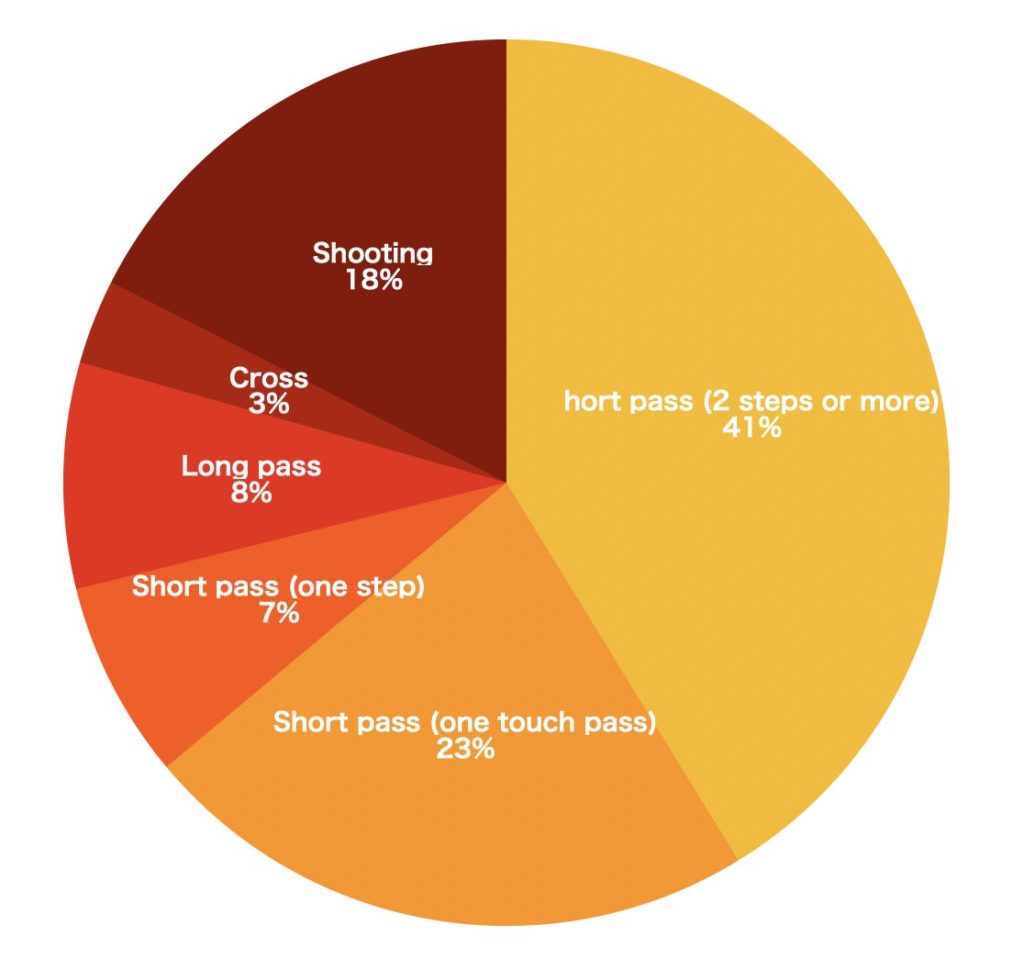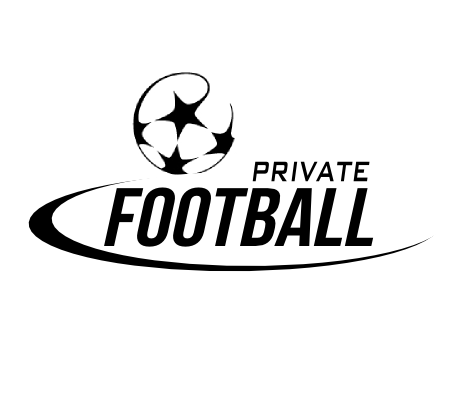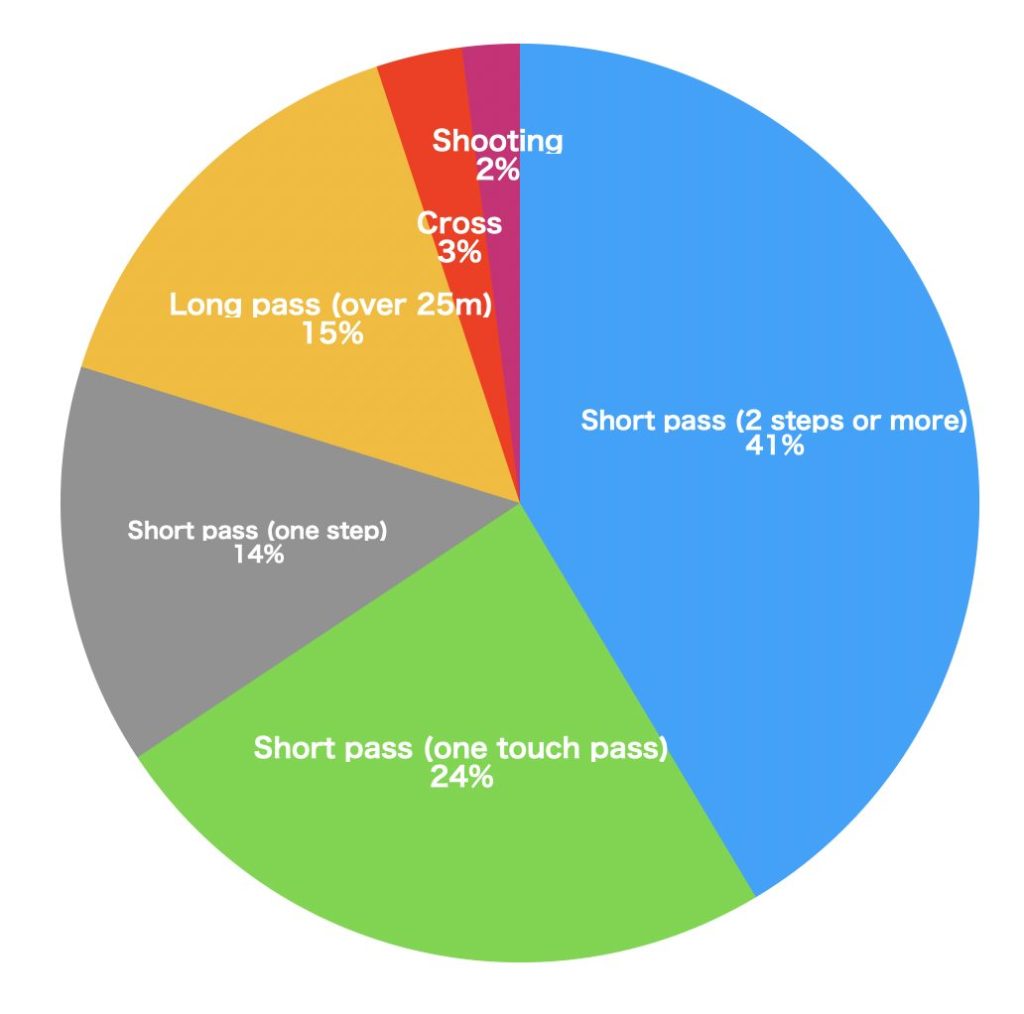As we offer private lessons to children, we are constantly researching what to teach them. And this time we thought of What kick is the most frequently used in a soccer match? There are various types of kicks in soccer, such as passing, shooting, crossing, etc. Using the inside, outside, and laces of the feet. Only children who have just started playing soccer do not know how to kick, so they even kick the ball with their toes.
In this article, we have examined the most frequently used kicks in a game(match) by watching a professional game (90 minutes) and a national-level U12 game (40 minutes).
We hope that the results will help you to understand the shortcomings of your team and what you are lacking as a player.
《There are six major types of kicks.》
The following chart shows the data for the top team and U12, divided into six major types of kicks that were frequently observed during the game.
Failed passes, headers, and goal kicks are not counted.
Average data of official games by top teams
(Barcelona, Liverpool, Real Madrid, etc.)
Average data of official games by national level U12 in Japan
(Kashima Antlers, Kashiwa Reysol, Resistor, etc.)
Short pass (2 steps or more) *Passing while doing a dribble, etc.
Passing after 2 or more steps after stopping the ball.
Short pass (one touch pass)
Passing a grounder or floating ball directly to a teammate
Short pass (one step)
Pass to a teammate within one step after receiving the ball
Long pass (over 25m)
Side change or forward or diagonal long pass
Crosses
Crosses from the side into the penalty area
Shooting
One touch shots, dribble shots, volley shots
One touch passes and short passes with two or more steps accounted for the majority of the total
Looking more closely, the top team players are very quick in their decisions from stopping the ball to passing. This can be said to be due to their ability to make instantaneous decisions by looking around them before receiving the ball.
In addition to this,they are able to kick more accurately with the inside kicks than with the outside or laces. (This is what we focus on improving passing skills when we have private lessons.)
In contrast, the national level of U12 also has a high percentage of direct passes and short passes with 2 steps and more steps. But because of the different size of the pitch and playing in a small space, they were able to pass a ball less often than the top teams.
To improve team level, it is important to pass a ball quickly and accurately!
Individual skill in soccer is very important, but first of all, if you want to improve team strength, it will be difficult to dominate the game if the entire team cannot pass accurately and quickly.
Of course, there are many other factors besides passing. But Arsenal, famous for its top team passing strategy, had a very high number of passes compared to other teams.
If you know about Arsenal passing game, click the URL below.
What Became Of The Arsenal Passing Game?
Diagonal and lateral passes were far more common than face-to-face passes.
Diagonal and lateral passes were far more common than face-to-face passes.(Some of soccer school does this practice a lot as well as our private lessons.)
One last point that caught my attention was that most short passes are not face-to-face (two allies facing each other face to face), but rather diagonally or laterally with inside kicks.
Face-to-face passing is important. B ut practice in such ways as changing the direction of the body, passing the ball diagonally in the direction of the ball, and passing while moving are more suited to practice.
Conclusion
The most used kick during the game was a short pass (more than two steps) with the inside.
By watching a game or watching parts of a game, there are hidden hints for improving team and individual skills.
i think it is better to practice daily with a sense of purpose , as this will improve your skills more efficiently.
Private Football offers one-on-one private lessons for elementary through high school students (5-18 years old). Our professional coaches provide individualized lessons in Tokyo and other parts of the Kanto area.

